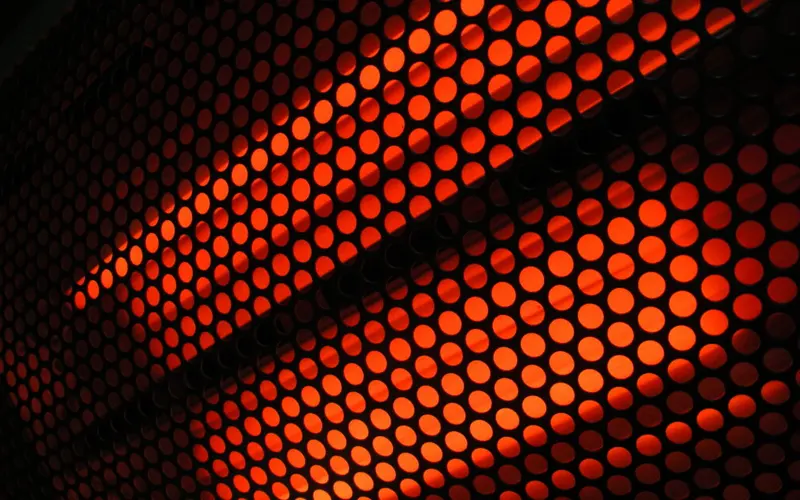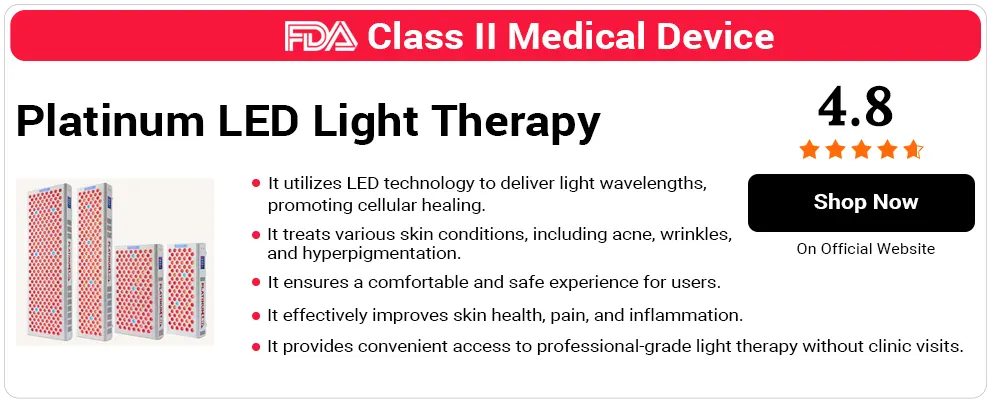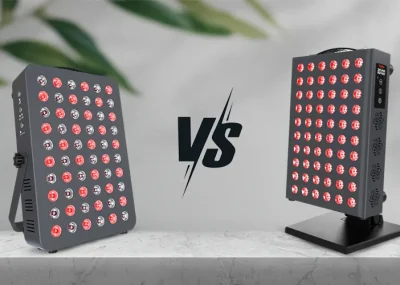Overview of Red Light Therapy Dosing
With red and near-infrared light therapy, having longer and more frequent sessions does not guarantee faster results. Some people suggest that applying red and near-infrared light on the skin for too long may cancel out the effects. Knowing what research recommends on the dosage of light therapy on the skin before you go and buy a high-intensity light therapy device is important. Red and near-infrared light are indeed helpful in treating many skin conditions. However, studies have documented that different skin conditions require light of specific intensities.
A study in the Journal of Clinical and Aesthetic Dermatology by Glynis Ablon, MD supports that light-emitting diodes treat various conditions if administered in the correct dosage. Patients using phototherapy with red light should have 20-minute sessions several times a week.
There are numerous health benefits of using red light therapy, including promoting cellular functions, hair growth, skin health, blood circulation, and hormonal balance. Depending on the result you want to achieve, there are protocols and recommendations that you should follow to avoid side effects. You need to be keen on the distance of the red light therapy device from the skin and its intensity. Intensity refers to the concentration of the light energy while distance refers to how far you are from the device. You can increase the intensity of light energy if you are far away from the device.
Another publication in the Seminars in Cutaneous Medicine and Surgery journal by Pinar Avci explains that people with active acne lesions may use red light therapy of 630nm and 12 J/cm2 twice a week for visible results. Patients noticed improvements after going through treatments in 12 sessions.
The dosage helps determine the intensity of light that you need to apply to the skin. You may decide to invest in a high-intensity device so that your treatment sessions will not last long and you still experience the transformative effects of red light therapy. Standing in front of your red light device for 10 minutes is better than sitting there for 30 minutes to get the same results.
Before you buy a device, you need to know which dose will be effective for the condition you are addressing. Many educational materials and research studies support that light within the range of 0.1J/cm2 to 6J/cm2 is ideal for skin cells. Much more light than that will cancel out the effects and less light will do nothing for the skin. You may decide to take doses at different times depending on your skin condition.
What Factor Determine the Ideal Dosage in Red Light Therapy?
In our experience dealing with red light therapy, we noted that there are key influencers that determine how much exposure to light therapy the body requires to achieve the set goal. Below we cover some of these key factors;
1. For Superficial Area
The distance between the source of light and the target area on the skin is very important. The superficial area on the skin means near the surface of the skin and not penetrating deeper. The red light of wavelength 630nm is ideal for treating superficial areas. Stand far away from the source of light, approximately 6 inches, and have a 5-10 minute session. The longer the distance from the device, the more the treatment time. Superficial area may require a dosage of 3-15J/cm2.
2. For Deep Tissue Use
Near-infrared light of wavelength 850nm is perfect for deep tissue treatment because it penetrates the skin into the tendons, muscles, joints, ligaments, bones, and other organs that need treatment. You should stand 6 inches away from the source of light so that it can penetrate the skin for about 2-7 minutes. For deeper tissues, you may want to use a high-power device so that it can deliver therapeutic benefits within a short span. Deep tissue use may need a light dosage of 10-60J/cm2.
3. Usage Frequency
Frequency of treatment is an important aspect to consider when it comes to light therapy. Since people have different conditions to treat, the frequency of light therapy may vary from one person to another. However, most manufacturers recommend treating about two times to fourteen times a week. Some people may also prefer using red light therapy every day for a short period, which is still ideal.
4. Distance from the Light
You should be aware that power density will decrease when you move further away from the red light source. Moving away from light energy reduces the dosage you require for treatment while being closer to the light increases the potency of the dosage. Nonetheless, being too close to the light will not guarantee you faster or more effective results. manufacturers recommend standing at least 6 inches away from the source of light to avoid exposing yourself to electromagnetic fields.
5. Actual Wattage vs Claimed Wattage
For you to determine the wattage of a light therapy device, you need to do physical calculations. Use a laser power meter to get the exact measurements of the light intensity rather than using theoretical measurements.
6. Size of the Device and Treatment Area
A red light therapy device can be too powerful to deliver transformative effects on the skin. However, it may be too small to only cover a small area. You need to know that a small red light therapy device will cover a small area, while a large device works on a large area of the body. Decide what you want and know the condition you want to address so that you can get an ideal and convenient red light therapy device.
How Can I Know the Strength of My Light Therapy Device?
To know the power density of any laser therapy device or LED, you need to use a laser power meter or an optical power sensor. These products are usually sensitive to light within the range of 400nm to 1100nm and they read light energy in W/m2 or mW/cm2. Ensure the optical power sensor is well calibrated and set to the range of light being emitted. For example, for red light power density, the sensor should be calibrated to within 630nm-750nm. Using a ruler and an optical power sensor, you can get the density of an LED light by distance.
Understanding red light penetration is vital for maximizing therapy benefits. Red light at 630nm effectively treats superficial skin areas. Stand 6 inches away for 5-10 minutes. For deep tissue, use 850nm near-infrared light, reaching tendons, muscles, and joints. A high-power device is ideal, with doses of 10-60J/cm2 for shorter sessions.
Power densities above 200mW/cm2 are not recommended for skin treatments because they are too powerful. They can be used for deep tissue treatments for a short time. power densities of between 500-1000mw/cm2 are ideal for deep penetration into the muscles, bones, and tendons. You can do a power density test on any LED device any time you want. Heat lamps and other full-spectrum lights may be difficult to test because of their broad spectrums and you may not get accurate readings.
Solar power meters are a cheap way to measure power density. While some people may prefer using solar power meters to get power density, the readings may not be accurate. A more accurate but expensive way to get accurate results is by using Thorlab sensors.
Red Light Dosage for Various Health Conditions
Because you now have an understanding of how to calculate dosage and power density, we have highlighted for you which light doses will be effective for specific conditions. For those looking to harness the full potential of red light therapy, proper dosing is key. Whether you’re targeting skin health, pain relief, or immune support, understanding the right dosage can make a significant difference. Particularly during flu season, maintaining an optimal dosing schedule can be a proactive measure. Discover how precise dosing can contribute to preventing the flu with red light therapy. Additionally, we have also reviewed the time needed per session for the specific conditions you are treating for effective results. The table below reveals the dosage and time needed to treat different conditions;
| Condition | Back Pain | Brain Health | Wound Healing | Skin |
|---|---|---|---|---|
| Suggested Dose(J/cm2) | 40 to 120 | 60 | 60 | 0.1 -50 |
| Recommended Time | 3m – 10m | 5m | 5m | 0.5 – 4m |
Frequently Asked Questions
How Much Red Light Exposure Should You Get a Day?
A: The duration and frequency of exposure to red light therapy will depend on the condition you want to treat and the intensity of light. Beginners are advised to start with a few treatment sessions in a week and increase gradually as they adjust to the light. It is important that you follow the instructions from the manufacturer while using a red light therapy device. You may also consult a doctor on the frequency of exposure to light therapy to avoid side effects.
What Number of Times is Safe Per Week to Use My Red Light Device?
A: Many skin conditions may require 20-minute sessions, three to four times a week. People with severe conditions may need more treatment sessions to achieve effective results, which is still ideal. Most manufacturers recommend three to fourteen times a week depending on the condition.
Conclusion
To get transformative and effective results when using red light therapy devices, following the correct dose is key. Many red-light therapy studies have included the correct doses to treat various conditions in the body.
The correct dosage for treatment with light energy should be somewhere between 20-200 mw/cm2. Since there are many red-light therapy devices on the market, you need to be careful in your selections.
Check the power density of the devices so that you can know the distance you will need to set the device from the skin. You can measure power density using an optimal power sensor. This will help determine the duration of each session and the distance of the device from your skin.
Red light therapy offers various health benefits, and understanding the specific wavelengths, such as 660nm, can enhance treatment effectiveness. Incorporating 660nm wavelength red light therapy into your routine can promote improved skin health, enhanced wound healing, and reduced inflammation. Explore the incredible benefits of 660nm wavelength light therapy to optimize your wellness journey.
For personalized guidance on implementing red light therapy dosing and selecting the right device for your specific needs, consider consulting experts at The Invigory Clinic.














